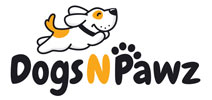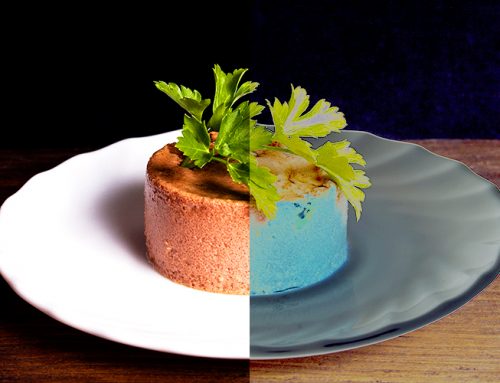Kibble — champion of the dog food aisle
People may remember the 1980s commercials of dogs frantically running home singing “Kibbles ‘n Bits, I’m gonna get me some Kibbles ‘n Bits.” There’s even one of a dachshund chanting “I long for my kibbles.” The television ads promoted a specific brand: the aforementioned Kibbles n’ Bits and later the repetitive Kibbles n’ Bits n’ Bits n’ Bits. It was a catchy jingle.
Kibble has long been the champion of the dog food aisle. Pet Food Industry reports that in 2015, dry pet food volume “reached 22.59 metric tons”.
“Within pet food categories, dry products have the largest sales,” writes Debbie Phillip-Donaldson, the editor-in-chief of Petfood Industry.
The Government of Canada reports that “In 2017, global dry dog food sales reached US$33.1 billion, while wet dog food sales were US$8.4 billion.”
Kibble is accessible: easy to use, easy to transport, easy to measure. It stores well and lasts a long time. Dogs gobble it up. It’s affordable too: According to Pet Food Processing, freeze-dried kibble costs 1,587 percent more than traditional dry kibble.
But kibble has taken a hit from more as expensive options — like freeze-dried or dehydrated — make their way to consumers. Some of these newer products market themselves as providing the benefits of raw food with the ease of kibble.
According to Statisa.com, traditional kibble — what most people think of when they think of dog food — dropped in overall sales in the United States by 2.2 percent between 2018 and 2019, while freeze-dried, dehydrated and Kibble plus grew in market share.
Kibble still dominates: Pet Food Processing reports that kibble maintains 72 percent of US sales.
Commercial dry dog food rose in popularity after the Second World War. In 1956 Ralston Purina created and launched the first pressure cooked dry food — kibble. They used a method called “extrusion” which was also used to produce other shelf stable products like cereal.
This early method is still used in the production of dry kibble today.
What is kibble and how is it different from other ‘dry’ foods?
Unlike dehydrated, air dried, or freeze-dried foods (which are dry to the touch), dry kibble goes through an extensive, commercial cooking process.
Some air-dried and freeze-dried products can have very few ingredients or fillers, while kibble and dehydrated (which visually looks similar to traditional kibble) often contain starches, grains and added ingredients: anything from fruit to flax to vegetables to artificial colors to supplements.

Always check the ingredients no matter what type of product you’re buying — manufacturers have their own recipes, specialties and processes that influence what dog foods contain.
How is kibble made
“The most common methods used to produce dry kibble include baking, pelleting, and extruding,” according to Dog Food Insider.
The basic process is “grinding, mixing, cooking, shaping and drying,” notes the Pet Food Institute, a lobby group that supports American pet food makers.
First, raw materials (usually various cereals like corn, wheat, etc.) are ground into a coarse flour. This is so the particles are the right size for cooking and water absorption. Each type of ingredient is ground separately. Ground ingredients can also include meat-meals.
All dry ingredients are mixed in the appropriate quantities in batches of up to 2,000 pounds at a time. Those ingredients are set aside until the next step, which is extrusion.
During extrusion, wet (meat, water, steam, fat) and dry materials are kneaded into a dough, then proofed, shaped and sliced. This is the method Ralston Purina used to come to market with the first commercially available dry kibble.
“Kibble, even the premium, grain-free, organic kibbles, are made with an expanding and extrusion process,” according to Nom Nom. “Raw meats, vegetables, carbs, and fillers, are mixed together to make a ‘dough’.”
Then, it’s into the extruder machine to be cooked.
“An extruder is a cylindrical barrel with multiple segments and a large screw that moves, mixes, and cooks the material before forcing it through a die where it is cut to the appropriate size,” Dog Food Insider notes.
The die is how kibble gets its unique shapes. Once cut, the food is dried and cooled, which is necessary to prevent mold. Drying the food helps its shelf life.
The final step is enrobing when the dog food is coated in a liquid or power to improve the flavor or palatability of the final kibble that appears in your pet’s bowl. Then, it’s packaged and shipped to your favorite pet store or online retailer.
Food manufactured this way needs to meet the nutrient guidelines set out by the Association of American Feed Control Officials and is regulated at the federal and state levels.
Why is kibble so popular?
Kibble is ultra-convenient for dog owners. It comes packaged in a wide variety of sizes and formulations. Food for medical conditions, allergies, fussy eaters, seniors, puppies, large breeds, small breeds — kibble has most pet owners covered.
It was the first commercially produced, widely available dog food on the market so it partially sells on the basis of familiarity and longevity. Plus, the product is shelf-stable which means owners can stock up and easily store it — unlike raw food which can take up valuable freezer space.
Kibble is a great option — or you can branch out and try a newer product that your dog may love even more. The pet food industry is always evolving and providing new products.





